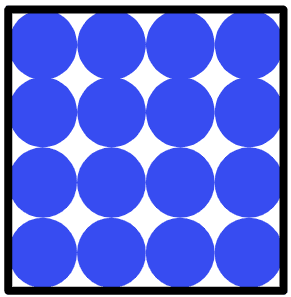Myths about teaching can hold you back


- Year 11•
- AQA•
- Higher
Chemical equilibrium
I can explain the concept of chemical equilibrium and the characteristics of a system in which equilibrium is established.


- Year 11•
- AQA•
- Higher
Chemical equilibrium
I can explain the concept of chemical equilibrium and the characteristics of a system in which equilibrium is established.
These resources were made for remote use during the pandemic, not classroom teaching.
Switch to our new teaching resources now - designed by teachers and leading subject experts, and tested in classrooms.
Lesson details
Key learning points
- At equilibrium, both reactants and products are formed at the same rate.
- Amounts of reactants and products remain constant at equilibrium.
- Equilibrium can only occur in a closed system.
Keywords
Dynamic equilibrium - occurs in a closed system when the forward and backward reactions of a reversible chemical reaction occur at the same rate; and the concentrations of reactants and products remain constant.
Reaction rate - is the speed with which a chemical reaction takes place, measured by the amount of a reactant used or amount of product formed in a given time.
Closed system - is one in which matter cannot enter or leave the observed environment, allowing only energy transfer between the system and its surrounding environment.
Common misconception
Equilibrium can occur in an open system; no reactions occur at equilibrium; amounts of reactants and products are equal at equilibrium.
Equilibrium requires a closed system; in an open system, matter exchange disrupts balance. At equilibrium, reactions still occur but at equal rates, leading to constant amounts, not necessarily equal amounts of reactants and products.
To help you plan your year 11 combined science lesson on: Chemical equilibrium, download all teaching resources for free and adapt to suit your pupils' needs...
To help you plan your year 11 combined science lesson on: Chemical equilibrium, download all teaching resources for free and adapt to suit your pupils' needs.
The starter quiz will activate and check your pupils' prior knowledge, with versions available both with and without answers in PDF format.
We use learning cycles to break down learning into key concepts or ideas linked to the learning outcome. Each learning cycle features explanations with checks for understanding and practice tasks with feedback. All of this is found in our slide decks, ready for you to download and edit. The practice tasks are also available as printable worksheets and some lessons have additional materials with extra material you might need for teaching the lesson.
The assessment exit quiz will test your pupils' understanding of the key learning points.
Our video is a tool for planning, showing how other teachers might teach the lesson, offering helpful tips, modelled explanations and inspiration for your own delivery in the classroom. Plus, you can set it as homework or revision for pupils and keep their learning on track by sharing an online pupil version of this lesson.
Explore more key stage 4 combined science lessons from the Industrial chemistry unit, dive into the full secondary combined science curriculum, or learn more about lesson planning.

Equipment
Beakers, plastic pipettes, food colouring, glass rods.
Content guidance
- Risk assessment required - equipment
Supervision
Adult supervision required
Licence
Prior knowledge starter quiz
6 Questions
Q1.Physical changes are easily reversible by changing the , for example changing the state of water from ice to liquid by heating, and back to ice by cooling.
Q2.Why are some reactions reversible?
Q3.If the forward reaction of a reversible reaction is exothermic, the backward reaction will be .
Q4.To carry out the experiment with hydrated and anhydrous copper sulfate, put the steps in order:
Q5.How can reaction conditions be changed so that reaction rates change?
Q6.Models have limitations. What does this image of the particle model NOT attempt to show?

Assessment exit quiz
6 Questions
Q1.Hot coffee cooling to room temperature is a reversible process. It is a rather than a chemical change.
Q2.Equilibrium is a state where opposing forces or processes are balanced. Which statements MUST be true at chemical equilibrium?
Q3.Dynamic equilibrium occurs in a system when forward and backward reactions occur at the same rate, and the concentrations of reactants and products remain constant.
Q4.A closed system of a glass container is filled with NO$$_2$$ under conditions which allows the equilibrium with N$$_2$$O$$_4$$ to be established. Why will you never observe a colourless situation?
Q5.Match the following key terms to their definition.
closed system -
system where matter cannot enter/leave, but energy can be transferred
dynamic equilibrium -
opposing processes occur with equal rates; no observable changes
irreversible reaction -
reaction where reactants form products; reaction goes to completion
open system -
system where both matter and energy can freely enter and leave
reversible reaction -
reaction where reactants form products, which revert to reactants

